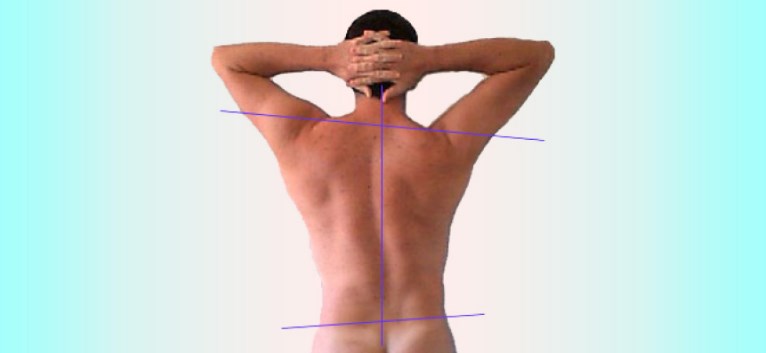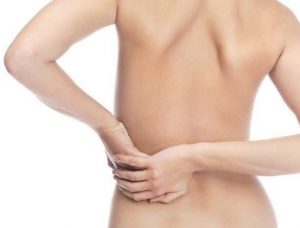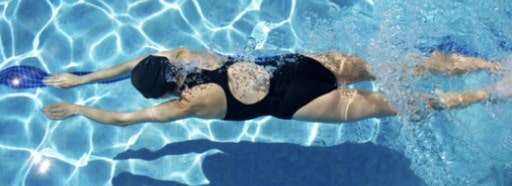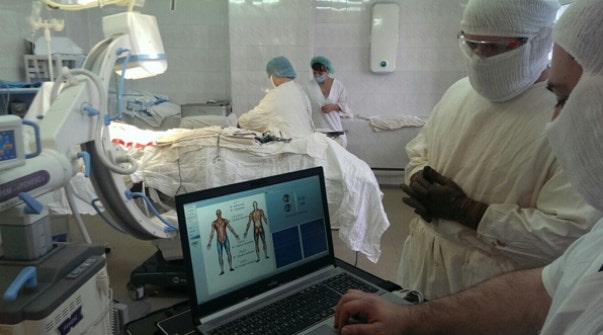The scoliosis lumbar is a pathologyíwhich is characterized by deviationólateral n of the vertical axis of the vertebral column, forming an asymmetryíto the waistóhip n and the different lengths of the lower extremities.

Esta deformationón causes severe back and chest pain. Increased pain is projected during exercise. card frequencyíaca tambiédon't see yourself disturbed, the beats cardíepisodes speed up and you may become short of breath.
When a person with lumbar scoliosis undergoes a general exam, a disposition is revealedón asiméshoulder and body joint, deviationóno of the omódishes and a distortionóno in the pelvis.
Depending on the directionón of the school archóprimary tic in the lumbar spine, it is customary to assign:
- Lumbar scoliosis on the left side
- Right side lumbar scoliosis
In left lumbar scoliosis, the space between the bone ilíacus of the pelvis and the lower border is májust smallñor that on the right side; while on the right side, the image is exactly the opposite.
in the majoríto of the patients, lumbar scoliosis can be seen on the left side. In counterpart, lefties develop lumbar scoliosis on the right side.
Often, specialists associate lumbar scoliosis with lumbar osteochondrosis. The biggestía of patients suspected of having osteochondrosis have scoliosis of the lumbar spine.
Index
Lumbar scoliosis degrees
exist 4 degrees of lumbar scoliosis. These depend on ácurvature angle secún Cobb.
1 degree. The áangle is between 5 a 10 degrees
2 degree. Áthat's it of curvature of 10 a 25 degrees
3 degree. The áangle of curvature is 30 a 50 degrees
4 degree. The áangle exceeds 50 degrees
Causes of lumbar scoliosis
 Generally lumbar scoliosis is idiopática, in which it is impossible to determine the cause. Nevertheless, There are other causes of this pathology.ía, including:
Generally lumbar scoliosis is idiopática, in which it is impossible to determine the cause. Nevertheless, There are other causes of this pathology.ía, including:
- Recessionóno of trainingón and growth of the spine, that appear in childhood
- Flat feet or clubfoot
- Anomalousías congébirth injuries caused by birth injuries
- Anomalousíace in the development of the fetus
- Spinal tumors
- Parácerebral lysis in neitherños
Sísymptoms of lumbar scoliosis

The sísymptoms of lumbar scoliosis, first, include pain over the regionón lumbar. in the majoría of the cases, are the cause of going to the méI say. Además, other s can be expectedísymptoms like:
- Pain in the chest and in the múspinal cords
- the activity fíphysical decreases and is likeún experience fatigue and weakness
- Restricted or limited movement
- Foot pain when walking
- The patient tends to walk crouched, with reduced speed and fatigue rápiously
- Sensitivity is reduced and numbness of the limbs is experienced
- Swelling is appreciatedóno in the regionón lumbar and in advanced stages asymmetry is observedíto the trunk
DiagnóStico of lumbar scoliosis
If some of the s have appearedíprevious symptoms, it is necessary to go to theéI say. The diagnosisóThe diagnosis of lumbar scoliosis involves an examination carried out by the specialist. If the s are checkedíntomas, be forwardedá the patient to radiographerías y / or magnetic resonanceética.
These instrumental studies allow to determine, accurately, the locationón, the grade and character traitsíStics of the pathologyía.
Spaghettiéthere are no otherséall diagnosticsóStico to confirm lumbar scoliosis, including:
- Scanneríto computerized
- Fluorografía
- Medición growth sitting and standing
- Study of the muscle tone of the back
- Goniometría electrónica, for the assessmentón of ranges of motion
Treatment for lumbar scoliosis
Lumbar scoliosis treatment should be started in a timely manner. Specialists prescribe the treatment of lumbar scoliosis according to the degree of the pathology.íand its causes.
For instance, first degree lumbar scoliosis can be treated with bracesés. The use of a hearté special exterior, is used to balance the positionón correct spine.
Conservative treatment

Within the framework of conservative therapy to straighten the spine, it is recommended exercise, practice swimmingón, do therapy nísica, include a diet with healthy and balanced foods, initiate stimulation proceduresóin theéctrica of the múback muscles and massages by a professional specialist.
It is important to note that therapeutic exerciseéit is of courseá Contraindicated in patients with grade 1 scoliosis 3, afterés of the surgeryíon the back or in pregnant women.
The corrective measures areán directed to the development and strengthening of the muscular system. The goal is to stop the development of the disease.
Treatment for lumbar scoliosis, it can be complex, this includes:
- Drug therapy, What: non-steroidal anti-inflammatory drugs, analémedicines and muscle relaxants
- Physiotherapy
- Spinal stretch
- Applied gymnasticséutica
- Acupuncture
- Massages
- Manual therapy
- Balance diet
Manual therapy and stretching of the spine should only be performed under the supervisionóNo. of specialists. Contacting dubious healers is not recommended, they don't have an educationóno corresponding license.
surgical treatmentúrgic

Only in extreme cases, surgical treatment is usedúrgic. Show usón of expert spine surgeons is intervene with the patient when the áangle of curvature exceeds 50 degrees.
One of the méall más used to treat scoliosis is to apply the hugóno spinal. This process seeks to realign and merge the vévertebrae that form the curve, in such a way that they unite in a úsingle and solid bone.
Grafting is involved in the process óseo, putting smallñthe portions of bone between the vévertebrae that want to fuse. The bone is expected to grow similarly, as if it were a fracture.
Finally the médico inserts a slash between the v'sévertebrae, attached to the column by screws, hooks or wires. The goal of this procedure is to align the intervertebral spaces, until I fuse heródon't happen. As a result, the person to adoptá an upright posture.